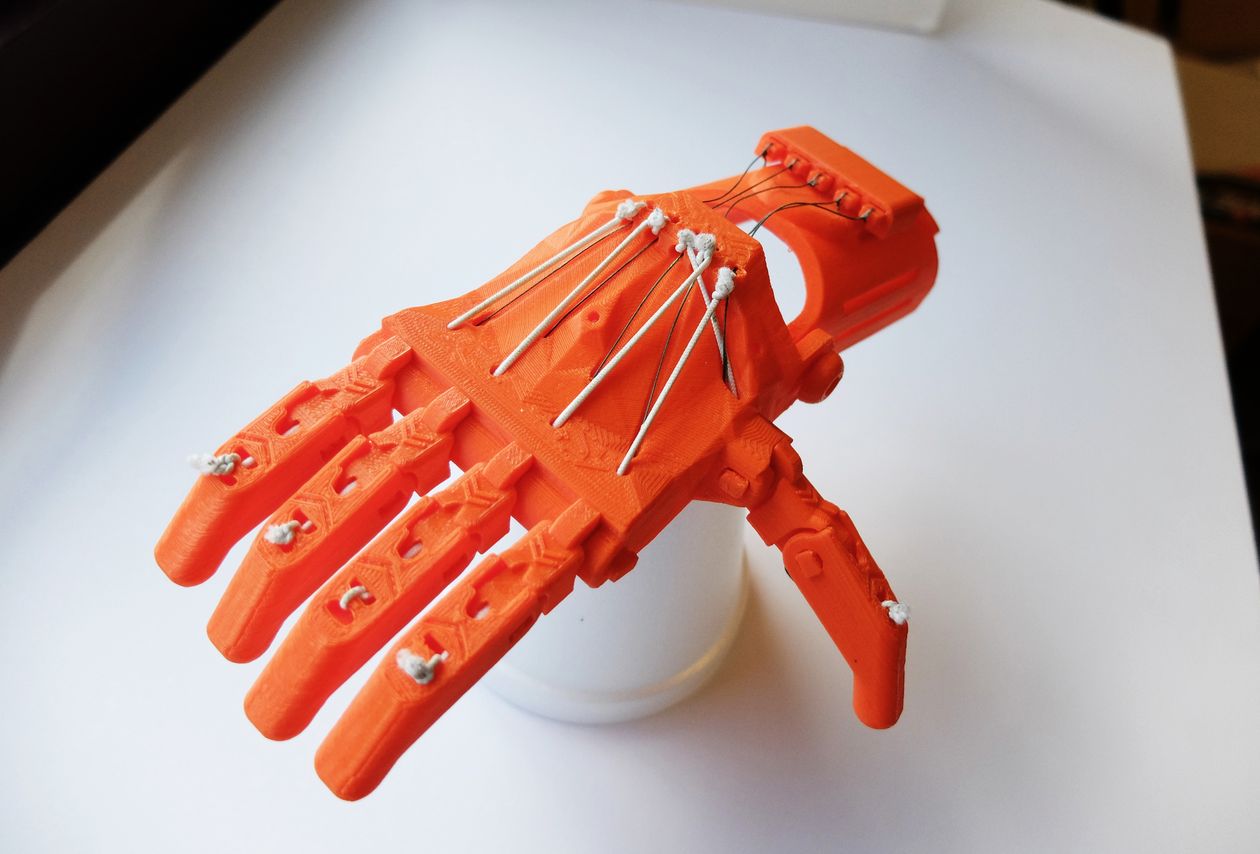According to the Open Hand Project, leading prosthetics can cost as much as $100,000. Illinois State’s College of Business (COB) recently made a prosthetic hand for $10 thanks to its 3D print lab.
Also known as additive manufacturing, 3D printing creates solid, three-dimensional objects from digital files. When printing items with multiple components, objects are often printed in pieces and later assembled to create the finished product.
At first, it may seem like 3D printing is something for engineers, but the technology has had a major impact on several industries, including manufacturing.
Associate Professor of Accounting Matt Nelson feels a 3D print lab is a perfect fit for the COB. He incorporates printing into several of his classes and feels it gives students a unique and meaningful experience. “There’s a large shift going on in manufacturing because of 3D printing,” he said. “There’s more personalization and customization because the product is being developed closer to where it’s consumed. It’s also created a whole different dynamic in supply chain management and cost management.”
There’s a large shift going on in manufacturing because of 3D printing. There’s more personalization and customization because the product is being developed closer to where it’s consumed. It’s also created a whole different dynamic in supply chain management and cost management. —Matt Nelson
With the 3D print lab, students are able to discuss issues with supply chain management, perform a cost analysis, as well as collaborate, develop and build prototypes. Students have a hand in all aspects of their projects from start to finish. In Nelson’s classes, students are required to complete cases which include a 3D print. They write up a reflection on how it will impact the industry, develop a prototype and print it.
But how exactly do you go about generating a prototype? Traditionally, creating sample products required professional designers and engineers. That’s not the case anymore. Crowd sourcing sites such as thingiverse.com provide users with designs where all they have to do is download, customize it a bit, print and assemble. Anything from wearable computer gloves to chip bag clips can be found and printed.
Armed with the internet and a 3D print lab, the creation possibilities for students are relatively endless.
COB student Jon Korsgard is what Nelson calls a high-end user and one of the best makers. He’s become somewhat of an expert in utilizing 3D printers and is the one who created the $10 prosthetic hand. It took him about four days to make.
Something as complex as a prosthetic hand requires several parts, each of which have to be printed separately and then assembled. The hand also includes electronics, specifically a robotic arm that attaches to the hand. In a recent demonstration, Korsgard showed the COB’s administration how he trained the arm and hand to pick up a ball and dump it down a slide. There was no design work involved except maybe a tweak to size and other minor adjustments. It was all downloaded from the internet.
“It’s an actual hand,” said Nelson. “It’s a smaller model and the same hand a 10 year old might be using in the real world, but instead of costing several thousands of dollars, it was just $10 to make.”
Korsgard’s project is proof that business school has come a long way. They aren’t really known to incorporate design into the curriculum, but with developing technology, that’s all changing. “In terms of design, I remember years ago we asked students to code or build a website,” Nelson recalled. “Now we can ask them to do all that and build things.”
Not only are students getting the unique experience of design and development, they are also fully engaged in 3D printing. Nelson describes COB’s 3D print lab as very “hands on.” Once students have their design ready to print, it’s up to them to go to the lab and print it themselves. “They can’t just drop it off. They have to load the printer and wait for it to be complete.” The lab has a handful of students like Jon who manage printers and assist with the print process. Nelson says this gives students a full experience and understanding of how 3D printing works.
That kind of experience is likely to be beneficial to students once they enter their careers. According to Nelson, companies are looking at where 3D printers will go. “You might see local car dealerships printing car parts or NASA printing objects for space exploration. Having knowledge of 3D printing and how it works is only going to help students and make them stand out.”

